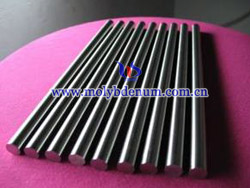Molybdenum Electrode Corrosion

Molybdenum electrode corrosion will accelerate electrode fracture and reduce its service life and use efficiency, so during operation it should be taken some protection measures.
The glass solution contain sulfate, so the electrode will be eroded. The convective motion around the electrodes has different effect on the horizontal electrode and the vertical electrode. The horizontal electrode has more low intensity diffusion flow along the length of the electrode. The vertical electrode pulls the molten glass from the bottom of the kiln. Besides, the vertical electrode due to the special heating effect where near the electrode, so the surface of the glass is hotter and rises up to the electrode tip. The rising glass liquid is replaced by a fresh glassy liquid which sticks around the electrode at the bottom, which causes the electrode diameter to become thinner until the electrode is completely etched away.
Sulfate attack is common in container glasses. The same reaction may occur in the oxide composition of other glasses. For example, when the batch contains a significant amount of nitrate and not all of nitrate is involved in the reaction to cause electrode corrosion. White arsenic and antimony powder are also very easy to restore the oxide, they also cause electrode corrosion.
In ampoule glass, the batch contains reducing agent and little oxygen, but because the molybdenum electrode in the ampoule glass due to the growth of Mo crystals, thus affecting its life, only about one year for operation.
If you have got any interest in molybdenum metals, please feel free to contact us by email: sales@chinatungsten.com, sales@xiamentungsten.com or by telephone:86 592 512 9696/86 592 512 9595.
Related Links: Molybdenum News & Prices
